

Tibet occupies the highest habitable elevations in the world. Apart from the world’s highest city by altitude in the Patagonia, Argentina, the rest five highest altitude locations of the world are in Tibet. With the locations at an average of 4,000m (about 13,000ft), that is some 4km in vertical measurement, above sea level, there is very low atmospheric pressure implying that the air is lighter in density than normal and therefore very little oxygen.
Through adaption, Tibetans don’t feel any of these symptoms to the extent that Lhasa, the capital city has a sports stadium with even a football pitch. Yes, the natives play football there. They skid and jump and never feel the exhaustion because their systems have been in tune with the level of oxygen and operate effectively with it. As they caution you on how to remain alive, they tell you they feel different and just normal. They would excite your mind that by the time you spend a week in Tibet, the symptoms would be mere history to you.
The author in front of the Potala Palace
Beautiful Tibet
Notwithstanding all these, never get scared if you intend to visit Tibet because the awe and beauty of the landscape are enough to compensate for your pains. Tibet’s landscape will enchant and excite you. If only you are not jittery about the mountains some of which incline like they would come down on you, you will feel like remaining in Tibet all your life.
Another generosity of nature to Tibet is water. From almost every valley or pass in between the thousands of spurs emanates a spring of pure, clean and enticing water. Tibet is the head of water supply that wets the entire China and swells the oceans at the east of the country.
There is the vast Kyi River in Lhasa with the Lhasa Airport sitting just by the bank. To the east of the Himalayas are also the two rivers of Nu and Lancang. And travelling to the south of Lhasa to the city of Linzhi or Nyinchi, pronounced ‘Linji’, the road traces the water course as the flood plain is the only space spared by the jutting peaks. Every settlement and economic activity excepting grazing is on the flat space that meanders at the mercy of the mountains.
Lhasa’s 4000m is the least among the five highest elevations of Tibet. Travelling towards Linzhi, the elevation sometimes rises beyond 5000m, until the great road arch from almost the highest peak on that stretch to the north descends sharply to the small route town of Sungduo. Before this place, the rivers flow in the opposite direction to your movement towards Lhasa, sign that leaving Lhasa towards Linzhi is gaining altitude.
But immediately after negotiating the widest loop and highest point of the road to the north, it is a continuous descent till Linzhi. The flow direction of the rivers convinces of this. The river which starts as brisk and jubilant rivulet some 25km from this great loop at the west or left side of the road keeps widening to a vast lazy river called Yarlung Zangbo in Linzhi after travelling downhill some hundreds of kilometers. The river twists and turns with the curves of the valleys and mountains and almost circles Linzhi and heads south west towards the Linzhi Airport from where it continues down to the Sichuan Province of China for its further journey to the seas.
Down this road that reveals to you probably the most spectacular landscape of the world with towering heights at the sides, springs and rivulets emanate from every other valley to join the major river channel as they form a team to journey on. The river gets more bloated as the team gets bigger until it spreads and slows down at Linzhi as enormous body of water.
This is Lhasa
The Potala Palace stands on a mountain at the centre of the city, the capital of the Tibet Autonomous Region as noble landmark. China might not be known for creed, but not in Tibet where everybody is devoted Budhist. Of the 3.2m Tibetans, there are 46,000 Budhist monks. That is an average of 70.2 persons to a monk. Tibet has about 45 ethnic minorities according to the natives, with the Tibetans making about 92%. The region has some few Han natives, the majority ethnic group of China, some Uygur, Mongolia and few others, some not more than 1000 people, all with their languages. It is also as diverse in religion with about 6000 Muslims and some 500 Catholics.
 |  |
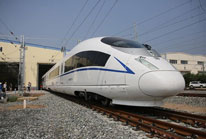 World's fastest bullet train to start operating next month
World's fastest bullet train to start operating next month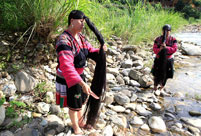 Huangluo: China's 'long hair village'
Huangluo: China's 'long hair village'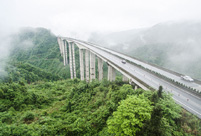 Spectacular bridge with one of the tallest piers in the world
Spectacular bridge with one of the tallest piers in the world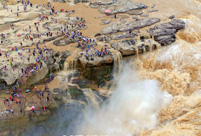 Magnificent view of Hukou Waterfall
Magnificent view of Hukou Waterfall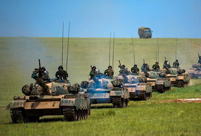 A glimpse of Stride 2016 Zhurihe B military drill
A glimpse of Stride 2016 Zhurihe B military drill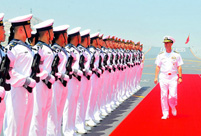 US Navy chief tours Liaoning aircraft carrier
US Navy chief tours Liaoning aircraft carrier Chinese American woman wins Miss Michigan
Chinese American woman wins Miss Michigan Centenarian couple takes first wedding photos
Centenarian couple takes first wedding photos Traditional Tibetan costumes presented during fashion show
Traditional Tibetan costumes presented during fashion show Top 10 livable Chinese cities
Top 10 livable Chinese cities Top 20 hottest women in the world in 2014
Top 20 hottest women in the world in 2014 Top 10 hardest languages to learn
Top 10 hardest languages to learn China’s Top 10 Unique Bridges, Highways and Roads
China’s Top 10 Unique Bridges, Highways and Roads Nation’s first Mars mission to be launched in 2020
Nation’s first Mars mission to be launched in 2020 Firms help job applicants cheat on physical examinations toavoid discrimination
Firms help job applicants cheat on physical examinations toavoid discrimination With labor costs rising, Taiwanese businesses consider leavingmainland
With labor costs rising, Taiwanese businesses consider leavingmainland Writers need scope to criticize global society
Writers need scope to criticize global societyDay|Week